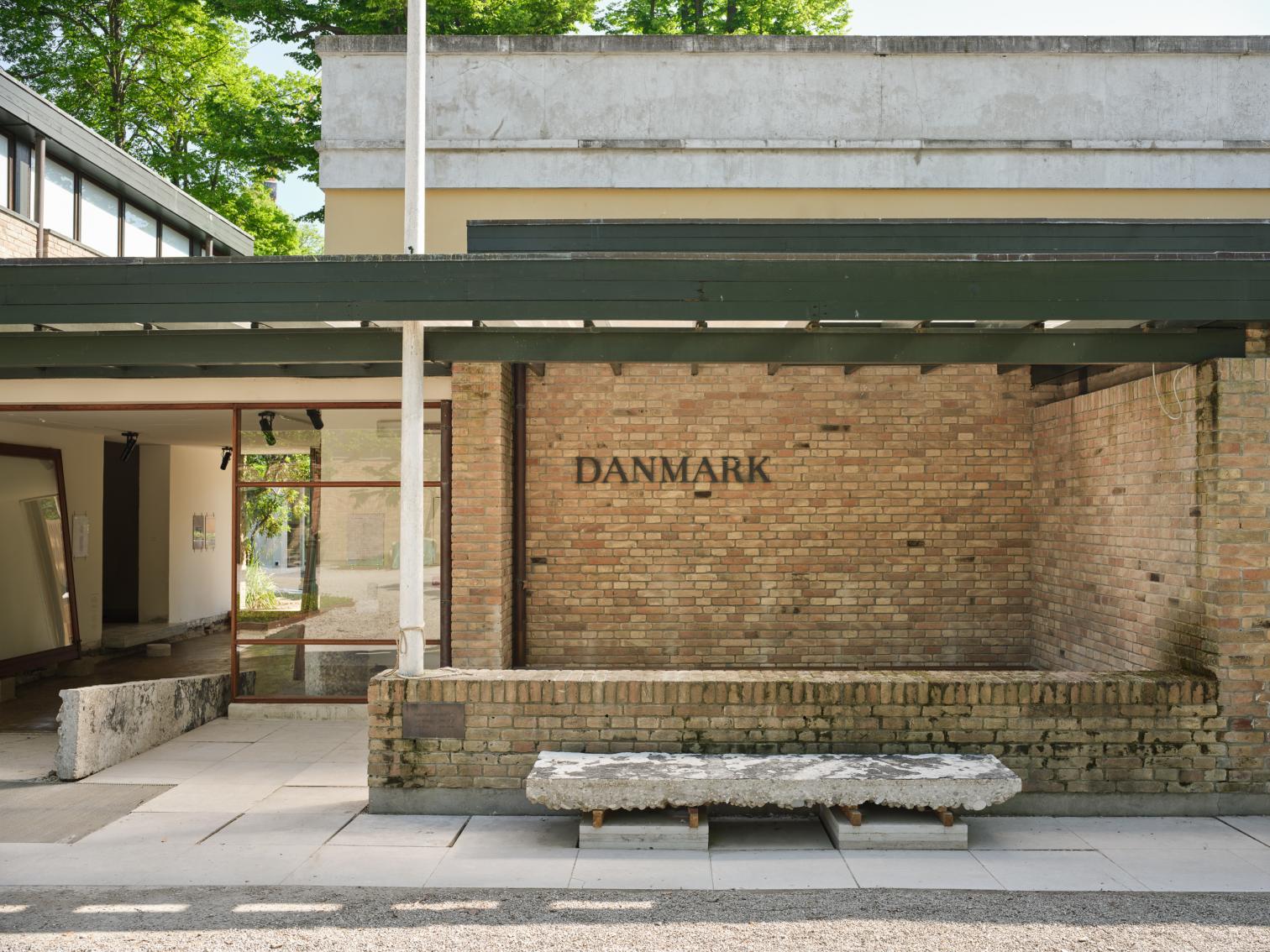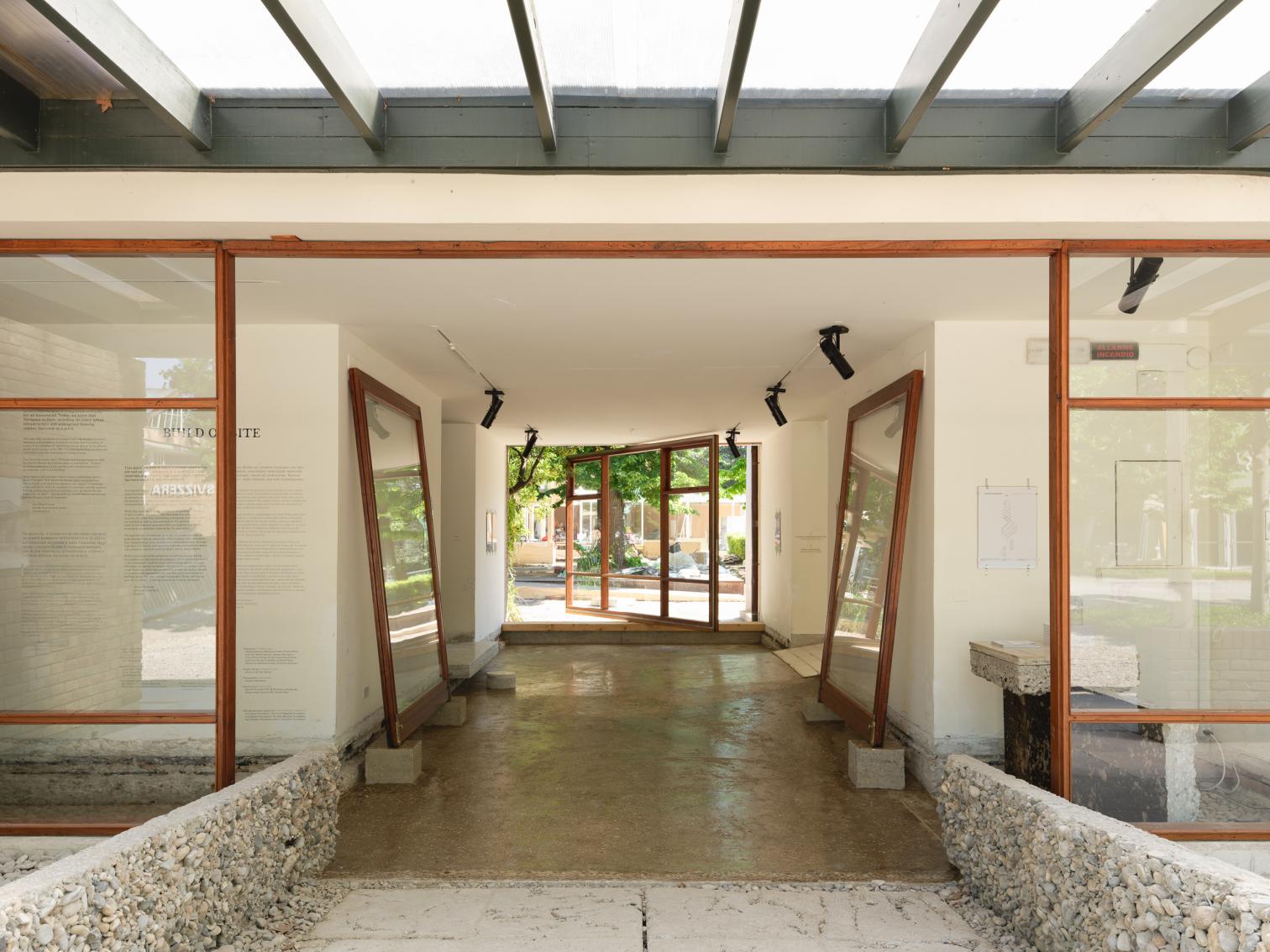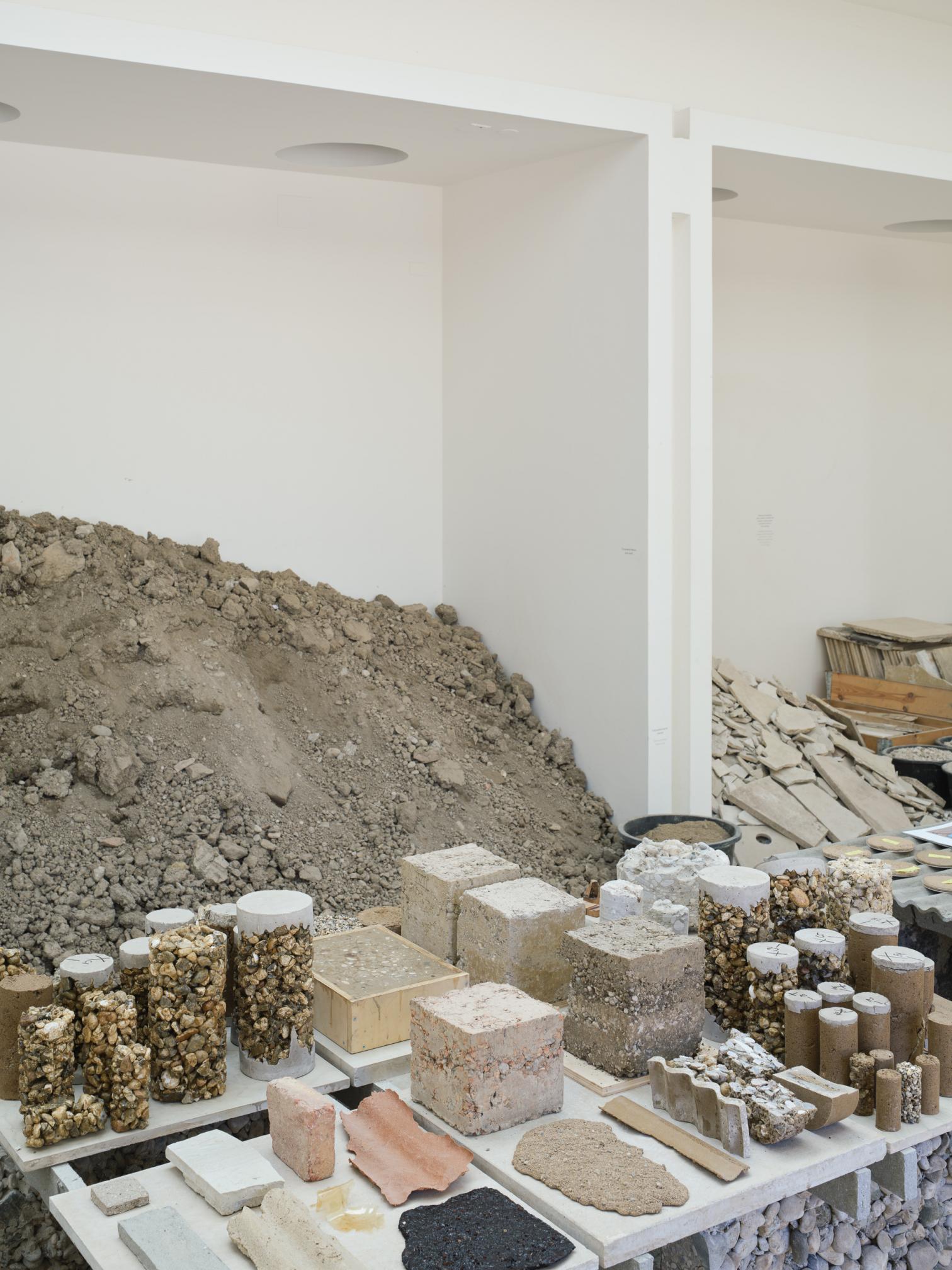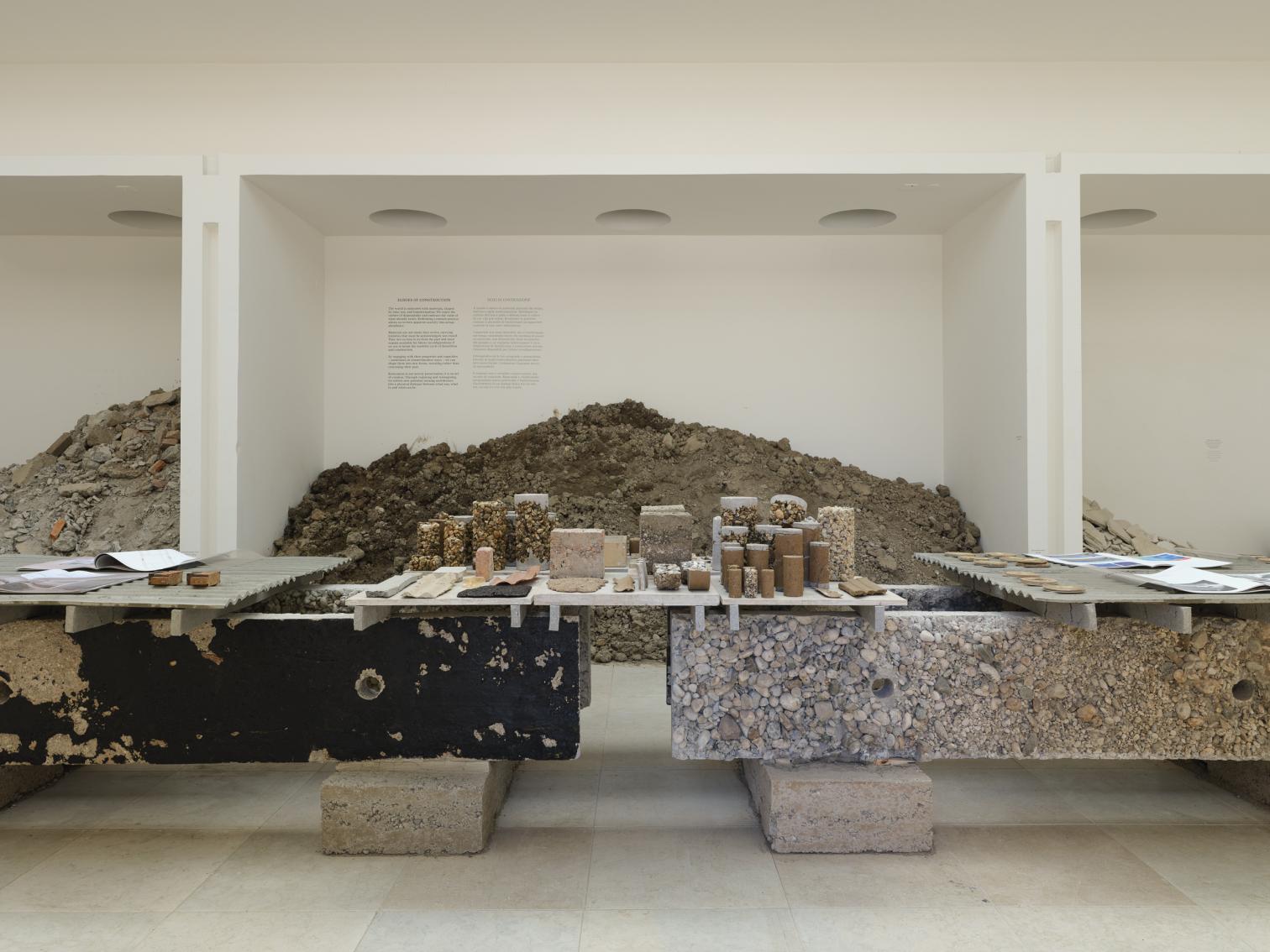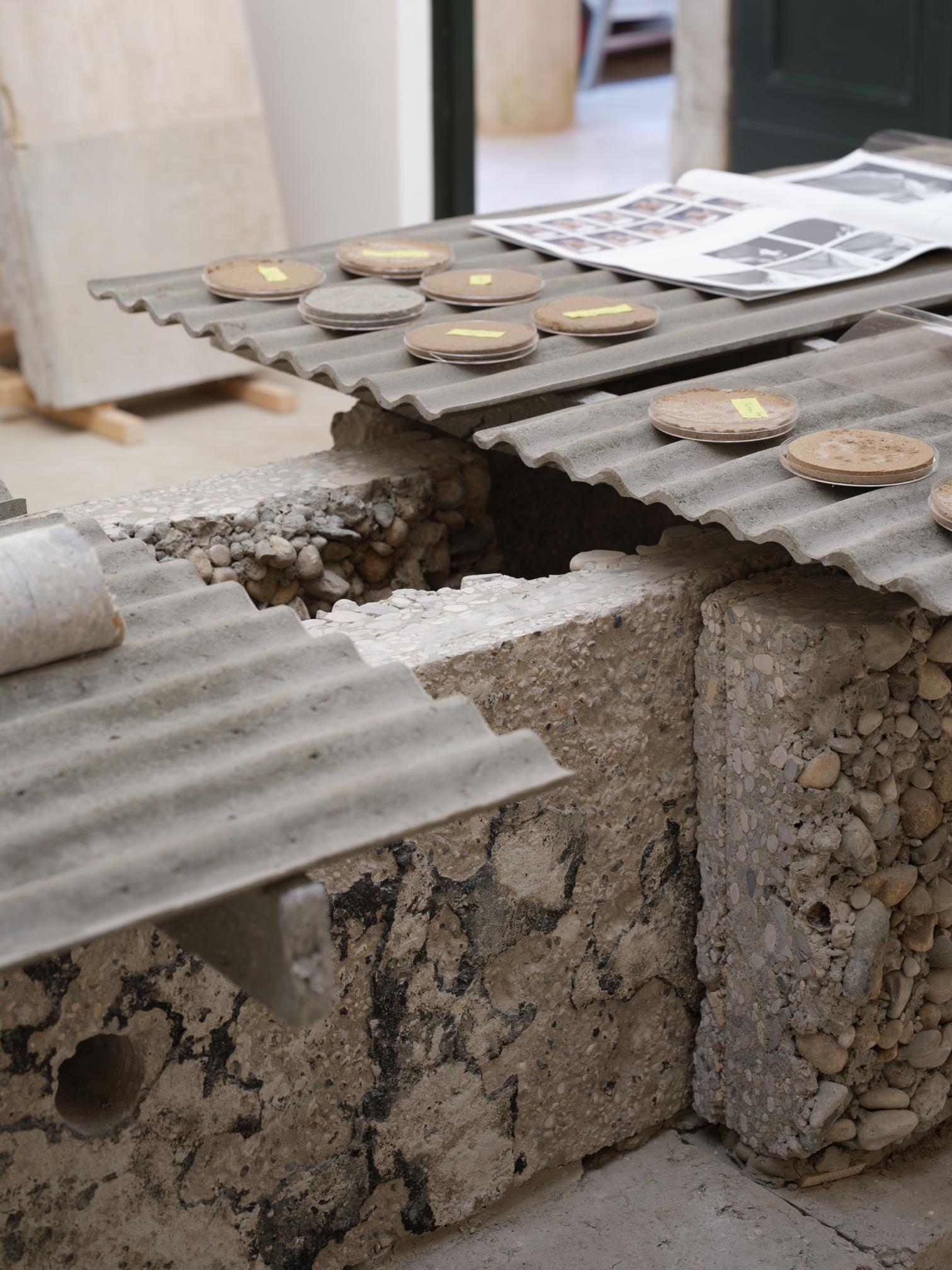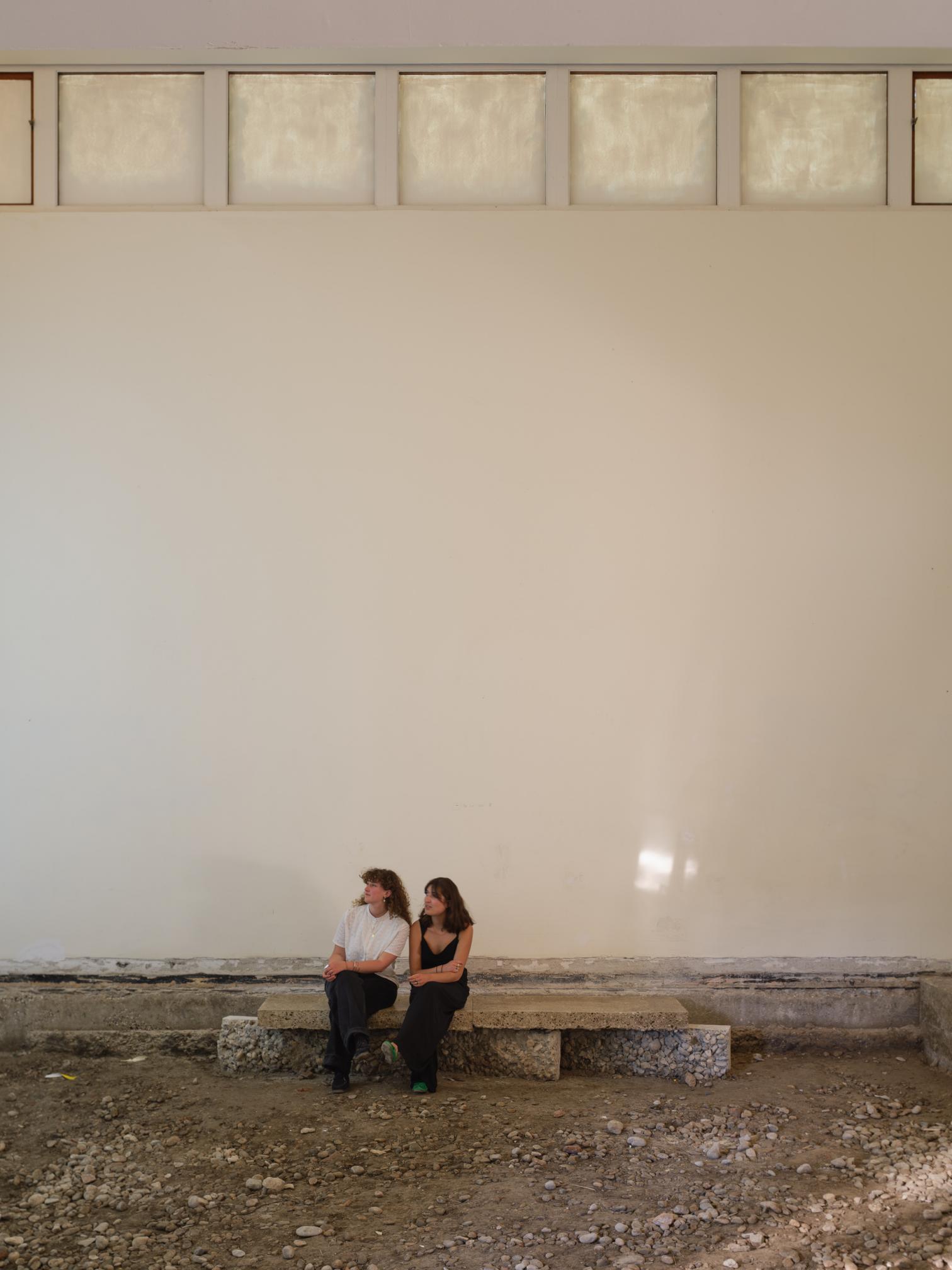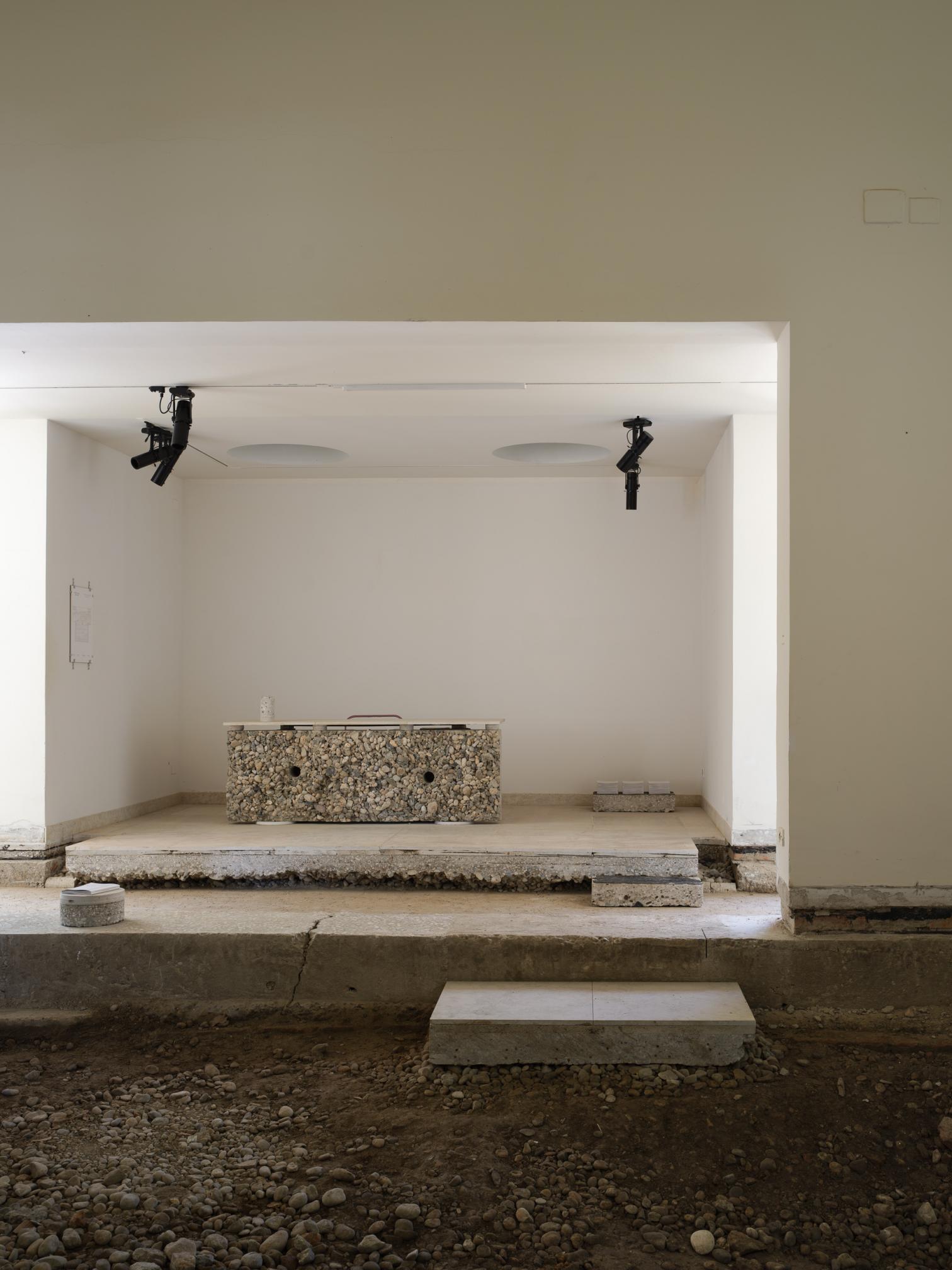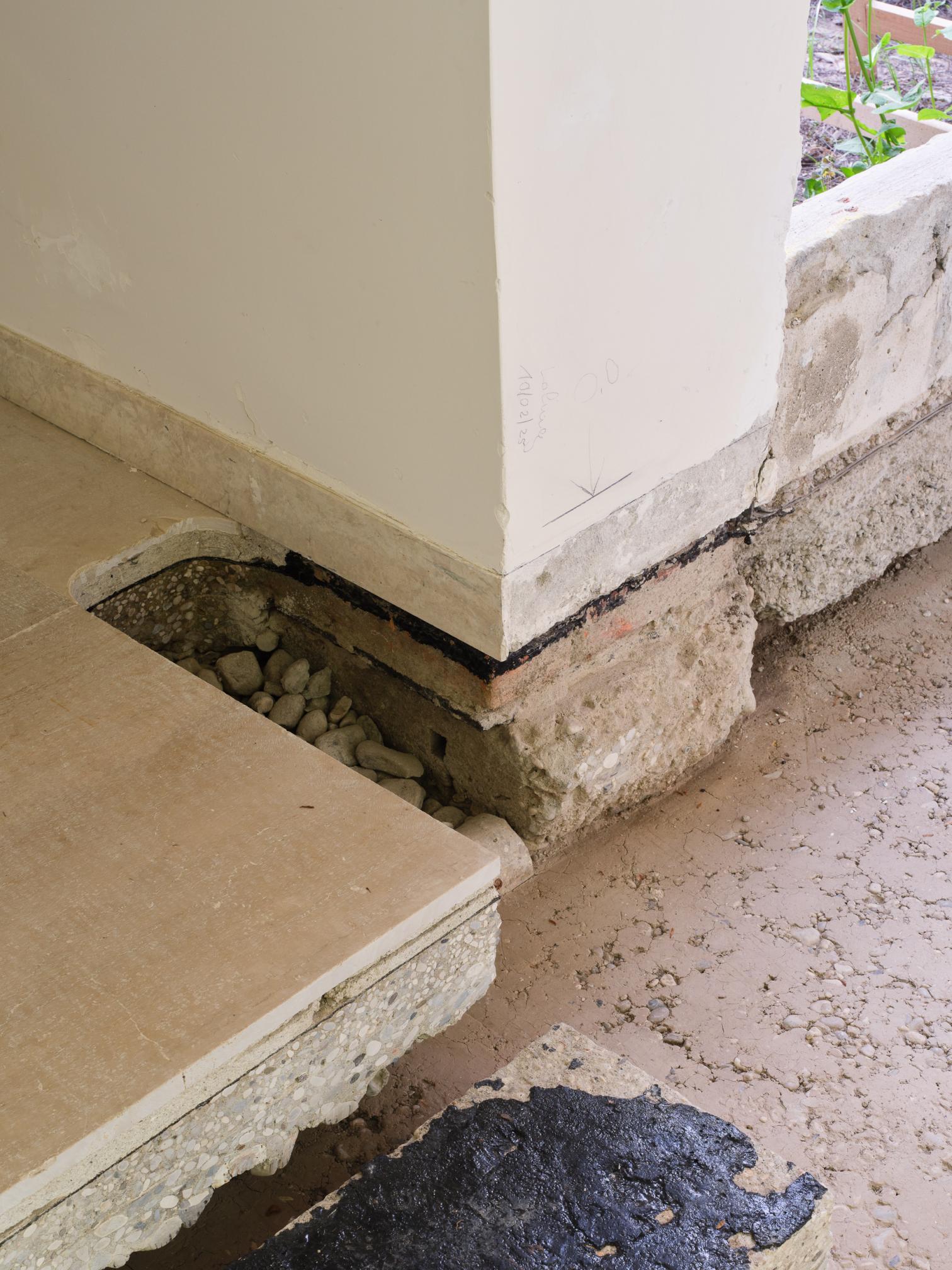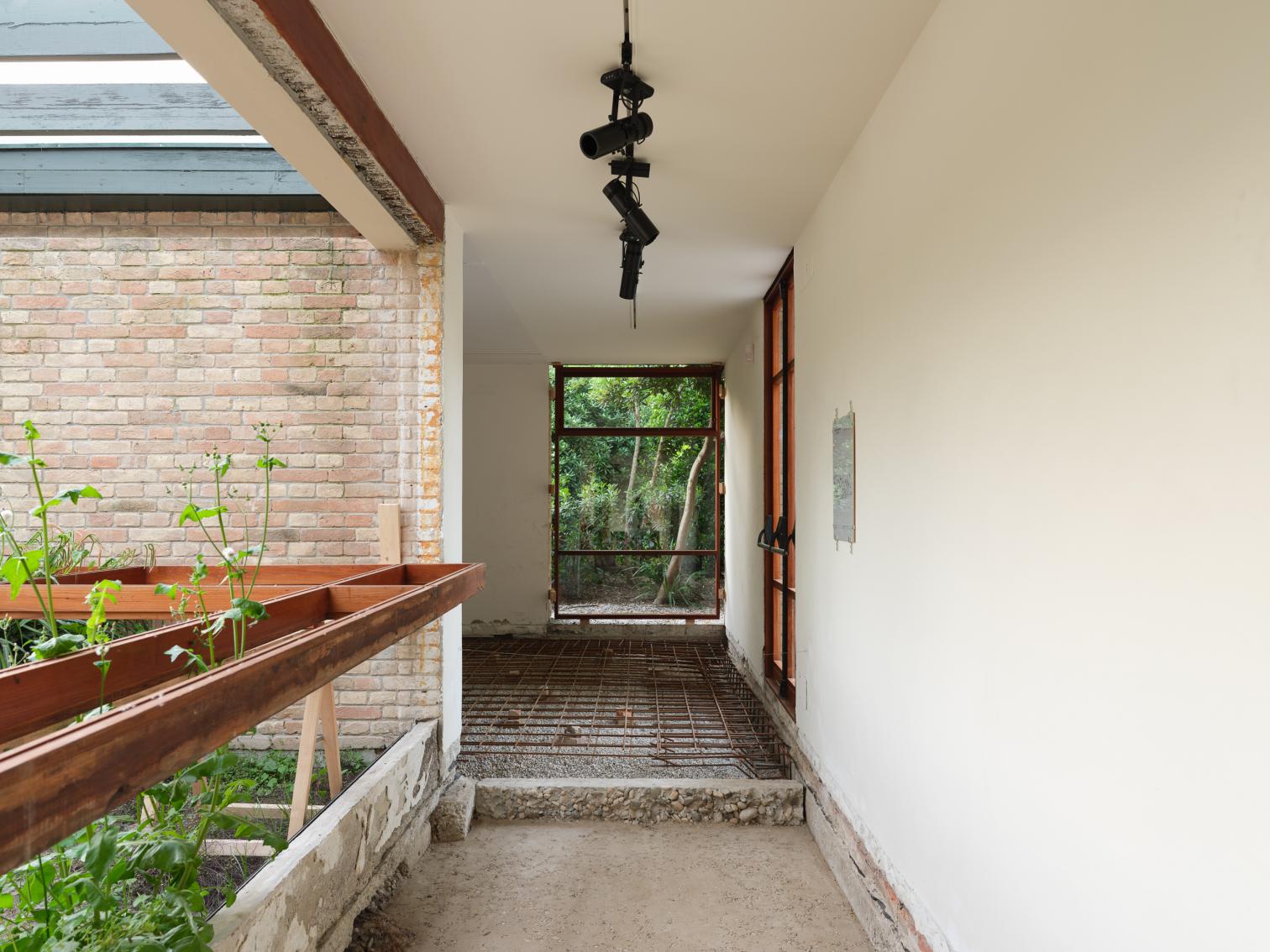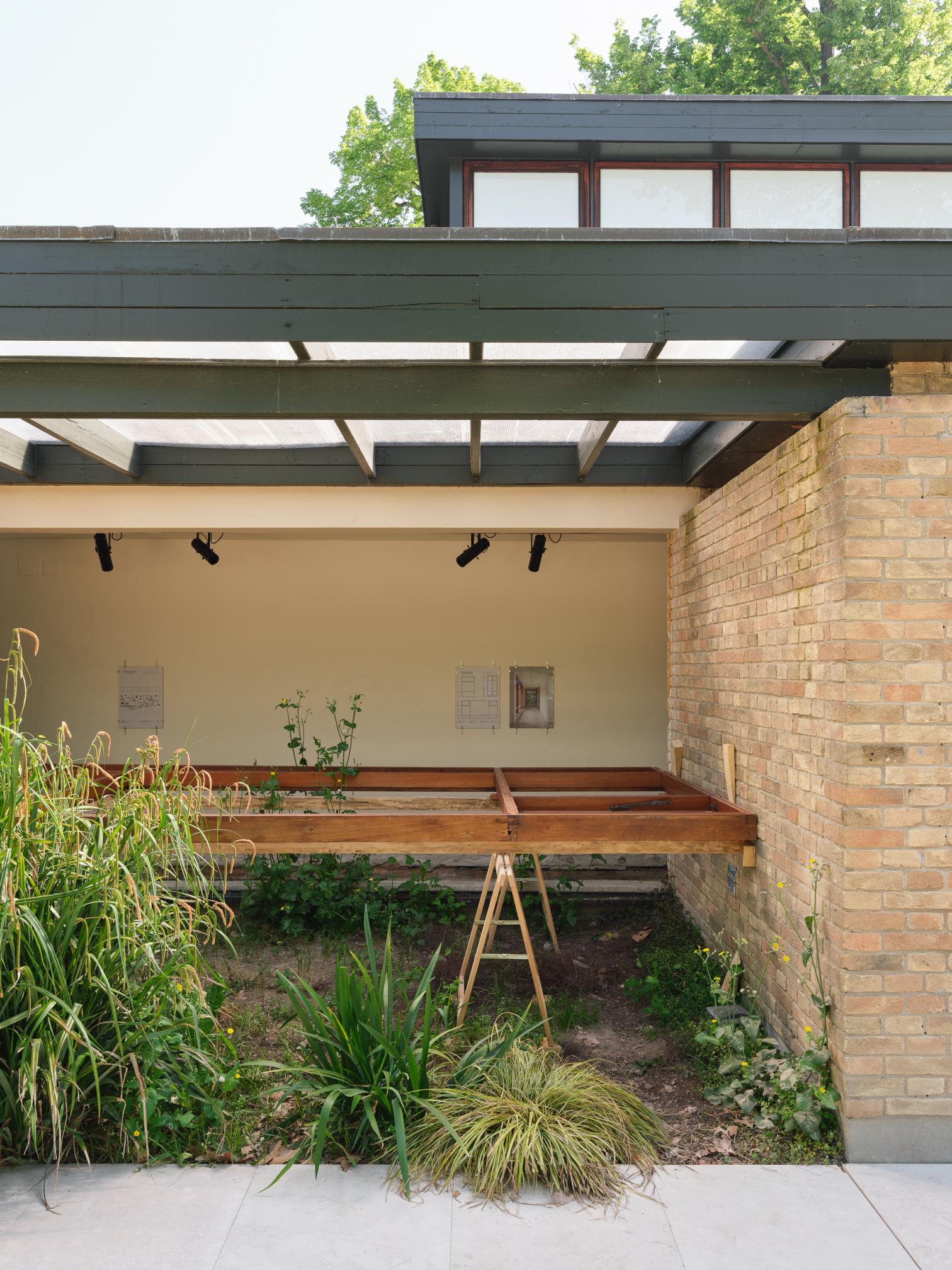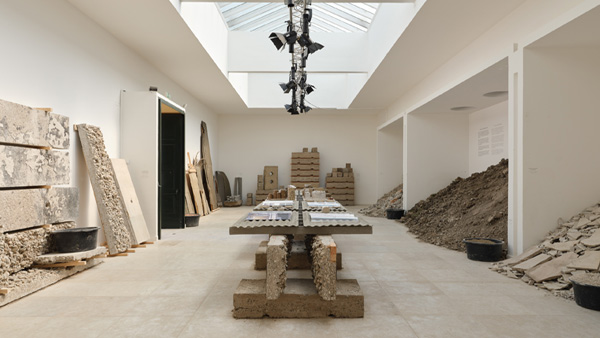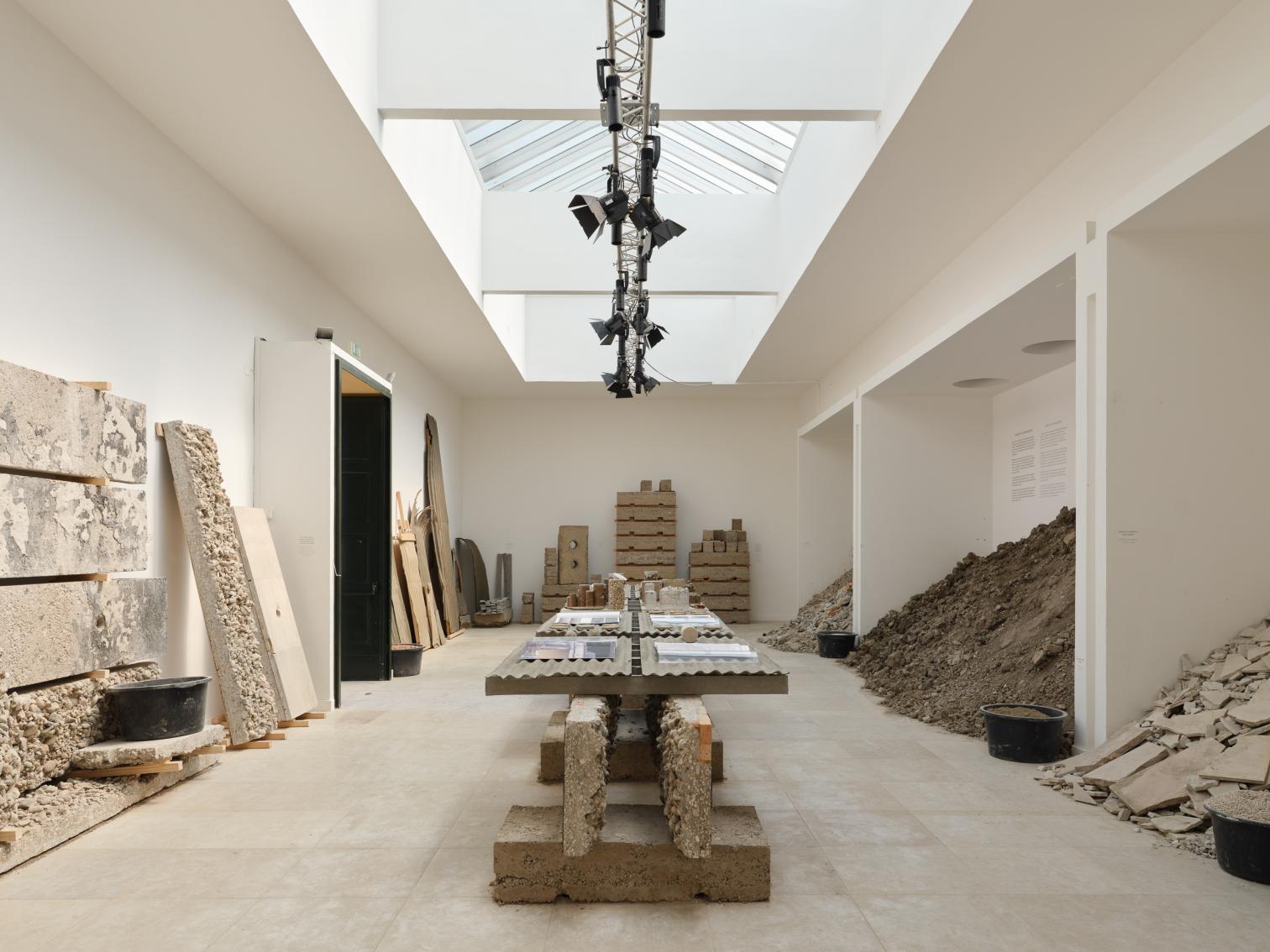
In a city of Byzantine domes, Gothic arches, and Ottoman columns – a crossroads and a meeting point for millennia – stones have much to say. Anyone traversing Venice with sharpened eyes and ears – skirting gondoliers, pizzerie, and souvenirs – senses this. And so with Søren Pihlmann, who in his scheme for the Danish Pavilion at the ongoing Biennale avoided the conceptual noise of the mostra to heed what the actual building whispers.
This is not really an original approach. All the pavilions in the Giardini – most of them built over a half-century ago – are condensations of interesting stories of cultural diplomacy and national identity, and many curators resort to them as intellectual armament for their discourses. Without having to go far back in time, at the Art Biennale of 2022 Germany dismantled part of its pavilion’s interior to put the focus on the fascist rhetoric of the 1938 remodeling. And this year, Japan uses artificial intelligence to breathe life into its pavilion’s most iconic elements, Korea reopens its building’s upper terrace to strengthen its connection with the garden that nourished the original project, and Finland shows a laconic documentary to reflect on the idea that Alvar Aalto’s reconstructed stand is a form of Theseus’s Paradox.
But none of this has to do with what Pihlmann presents. ‘Build of Site’ is not about goings-on in Denmark, nor about the architects – Brummer and Koch – who designed the pavilion and its extension. It is simply a necessary refurbishment, an overdue tuning of a septuagenarian instrument afflicted with wear and leaks, but at the same time a respectful ode to the virtues of the site. With no concern for novelty, the exhibition draws attention to what’s already there: gravel, metal plates, concrete fragments, and tiles removed in the course of waterproofing the floor. Building material which, in a smart exercise on recycling, gets a second life.
Construction works began late in 2024, and throughout the Biennale visitors will have the feeling of stepping into the site of a renovation in progress, as if while the workers are having a break. Rubble, metal bars, and rickety window frames are piled up at the corners. In unpaved parts, the floor one steps on is irregular and a few centimeters below street level. And yet there is no dust, and no operation left to chance: after all, this is an exhibition. Through rooms in varying states of dismantling stretches a carefully planned route along which benches, ramps, pedestals, and a display table have been carefully designed with actual restoration materials: ‘hyperlocal’ resources, as the curator puts it.
This is how it has always been done, Pihlmann points out, because artisans have always looked immediately around them for the raw materials of their craft. The Danish Pavilion thus takes a stand against the throwaway culture that tends to prevail in temporary exhibitions, and tries to bring attention to every piece of waste generated by the building work. The idea looks simple, but its formalization has involved the collaboration of architecture schools, professionals doing research on materials, and builders, who have harnessed cutting-edge technology to make the most of the components. For example, every single tile of Istria stone was analyzed in order to see how it was cut in the quarry, and to predict its fragility before reuse. Also, ultrasound tests helped in determining the resistance of the concrete slabs that were to be sliced in strips.
In what is halfway between a Wunderkammer and a laboratory of samples, everything is meticulously placed around a central showcase made with tatters of flooring, where with an obsessive degree of precision a series of notebooks documents each joint and construction detail of the building. In the other halls, a documentary produced by the television channel of the Louisiana Museum and a small publication in which the poet Adam Dickinson has participated spell out the two-year process, and link the Venetian experience to other works by Pihlmann that invite people to think up the future from the standpoint of the present, with less techno-optimism than creativity.
Every November, the closing of the Biennale gives way to other projects, but nothing will come out of this pavilion. The restoration works will resume, preservable elements will go back in place. Unpreservables will be crushed and cast into new terrazzo pavements. Everything will be as it was before, but the stones will now have a new story to tell.
